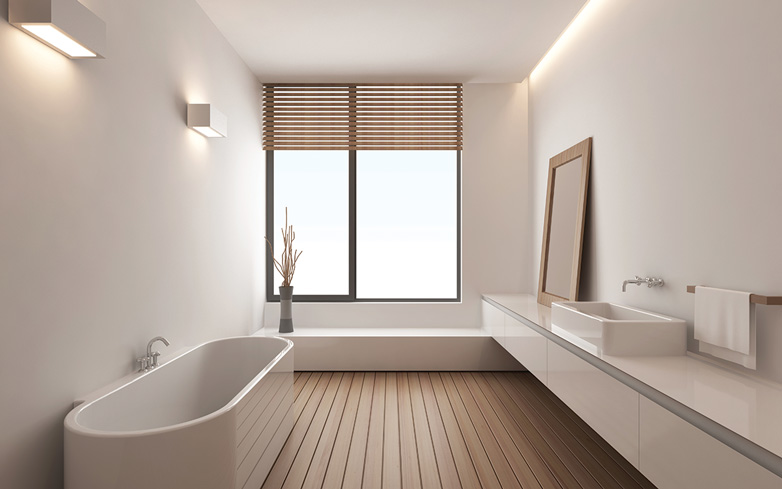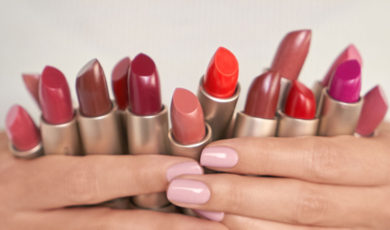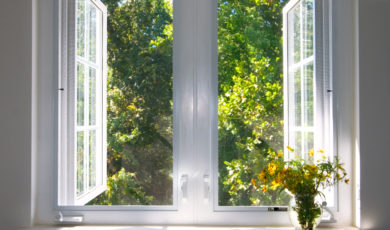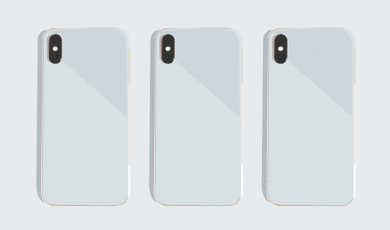The Life-Changing Magic of Finding Your Decluttering Style

Every few months or so, we believe it’s important to have a moment of self-reflection, for thinking about your recent successes and planning goals for the future. There are many ways to do this, but if you ask us, decluttering is our favorite place to start. “[It’s] all about identifying needs and lifestyle goals, and eliminating what isn’t a part of that,” says Laura Kinsella, the owner of Urban OrgaNYze, an NYC-based organizing company. Some might think that decluttering is just a means of cleaning out closets and tossing old clothes. But it’s more complex than just that. “It’s about finding clarity, living with intention, and getting rid of excess items that may cause stress,” Laura explains.
Thanks to the wildly popular TheHomeEdit Instagram account, and shows like Hoarders and Tidying Up with Marie Kondo, decluttering is top of mind these days, and people from all over the world have adapted methods (some that are centuries old) to create their own best way to a calmer, more organized life.
If you’re looking to get things in order, now is the perfect time. We rounded up four of our favorite decluttering techniques from around the globe. Whether you’re looking to deep clean your dresser or overhaul your home for a clearer mind, there’s a decluttering method here for you. Take a peek below, and get tidying!
The Trendy Decluttering Method
What It Is: The KonMari Method
Translation: A play on the inventor’s name
Country of Origin: Japan
Inventor: Marie Kondo
The Basics: There’s a chance you’ve heard of this method from Marie Kondo’s New York Times best-selling book The Life-Changing Magic of Tidying Up. Here, you only keep physical items that “spark joy.” To do so, the KonMari Method tidies in a specific categorical order: clothing, books, papers, komono (AKA miscellaneous items), and finally objects with sentimental value. This way, you’ll be able to declutter the hardest objects last. “By following a certain tidying location and order (not to mention taking on your home in one fell swoop), you’ll be on the path to a happier life,” says Laura. KonMari Method places importance on discarding prior to storing, designating specific storage solutions for everything and storing items vertically. With this method, the idea is that everything should be able to stay orderly and organized in the long term.
Best For: Those who feel overwhelmed by the idea of decluttering. The orderly manner and step-by-step directions of this method make it easy to follow. It’s also best for anyone who has the time and energy to declutter in one sitting.
What to Read: The Life-Changing Magic of Tidying Up: The Japanese Art of Decluttering and Organizing by Marie Kondo
The Ancient Decluttering Method
What It Is: Feng Shui
Translation: Wind water
Country of Origin: China
Inventor: The Yangshao and Hongshan cultures
The Basics: This ancient Chinese practice is used for designing harmonious environments based on your relationship with your surroundings. The practice centers on balancing three basic concepts: yin and yang (opposite forces), qi (energy flow) and the five elements of nature (water, wood, fire, earth and metal). In the home, Feng Shui teaches decluttering, cleaning surfaces, rearranging furniture and adding elements of nature in the attempt to balance the overall energy in each room. In contrast to other methods, “There is no ‘right’ or ‘wrong.’ Everyone’s feelings and energies are uniquely theirs,” Laura adds. “It’s a form of self-care that requires complete vulnerability and openness.”
Best For: Those who are looking for more balance in their lives, whether that’s with their physical space and belongings or their emotional state.
What to Read: The Holistic Home: Feng Shui for Mind, Body, Spirit, Space by Laura Benko

The 3-Step Decluttering Method
What it is: DanShaRi
Translation: Refuse, Dispose, Separate
Country of Origin: Japan
Inventor: Hideko Yamashita
The Basics: This 3-part Japanese method is fairly self-explanatory. It centers on the idea of refusing clutter before it enters your life, disposing of mental and physical “junk” and then separating your attachment from physical objects. “I love the concept of this method, as it focuses largely on one’s self, and not one’s stuff,” Laura notes. “It keeps you actively in the now, changing the relationship you have with your stuff so that you are in total control.” The practice can be applied to various areas of life, from decluttering homes to refining emotions or even spiritual liberation.
Best For: Anyone who has “inherited” a lot of clutter, or those who struggle with impulse control
What to Read: Goodbye, Things: The New Japanese Minimalism by Fumio Sasaki
The Practical Decluttering Method
What It Is: Dostadning
Translation: Death cleaning
Country of Origin: Sweden
Inventor: Margareta Magnusson
The Basics: Lovingly referred to as “Swedish Death Cleaning” by its practitioners, Dostadning is a cleaning and decluttering method in preparation for life’s end. Think of it as the bucket list of decluttering. “I appreciate [this method’s] fluid approach to decluttering; there is no set way of folding or categorizing like KonMari, nor is there a specific tidying order, location or time limit,” Laura says. While the word “death” might sound grim, the idea is to actively manage your belongings and sort through things yourself, so the task isn’t left to loved ones someday. Magnusson’s book also shares uplifting ways people can transform their homes and minds to help loved ones heal once they’re gone. In her book, The Gentle Art of Swedish Death Cleaning, Manusson differentiates between what you can easily declutter and what you should keep to pass on — all in an approachable and surprisingly fun manner of letting go.
Best For: Anyone who might be downsizing, making a major life change or looking for a decluttering method with less rigidity
What to Read:The Gentle Art of Swedish Death Cleaning: How to Free Yourself and Your Family from a Lifetime of Clutter by Margareta Magnusson
So, Where Do I Start?
Overwhelmed? Start small! Laura suggests tackling one small drawer or simple task. Set a timer for 10 or 15 minutes, choose your method from the above, and just go. Once you get started (and see how much you can do in just a few minutes), decluttering might not feel as daunting.
For the items you’re not too sure about — if you’re not sure whether they’re sparking joy or just sparking memories — try placing them in a box and stowing them away in your closet for 6 months. If you haven’t thought about them after 6 months (or needed to use them in any way), it’s probably best to donate or dispose and start fresh.





